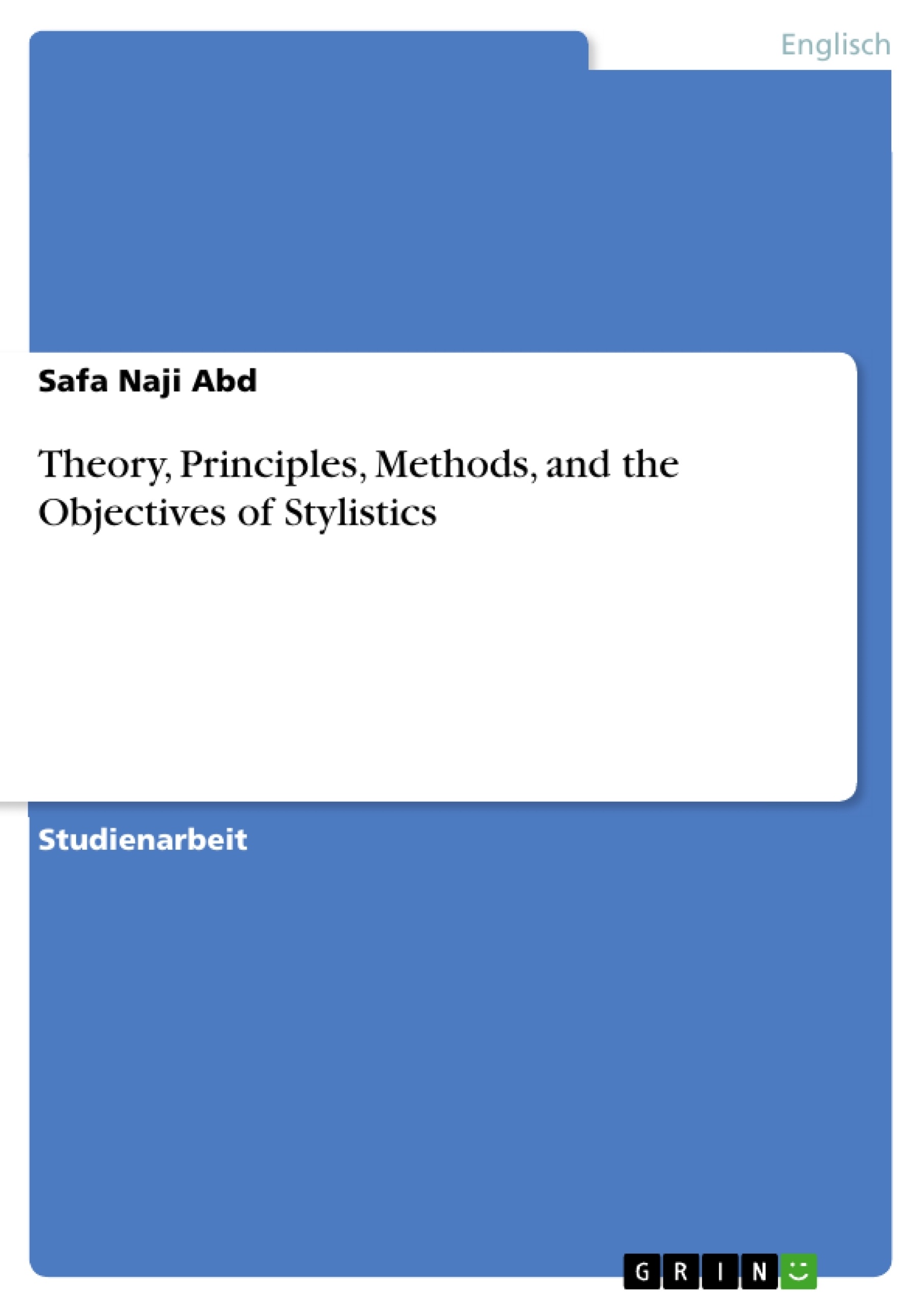The study attempts to shed light on the major theories, methods, principles, and modern approaches (developmental ones as cognitive and effective ones) of stylistics in details in English language with examples.
Stylistics is eclectic in its use of theory, though it originated in literary theories of formalism and took on the theory of structuralism. In the early twentieth century, the theories provided were a descriptive apparatus such as grammatical and lexical terminology and categories which enable writers and scholars to present the techniques of construction that the writer uses in his work.
In time, stylistics countered to the developing of new theories of language, based more on contextual factors in the case of pragmatics and discourse analysis and on cognitive factors in the case of generative grammar and cognitive linguistics. It is able to use insight provided by all these theories to support new analytical processes and provide new insight into the style of texts and their reception by a range of potential audience.
Inhaltsverzeichnis
- Theory of Stylistics
- Affective stylistics
- Schema theory
- Text world theory (TWT)
- Conceptual metaphor theory (CMT)
- Functional Stylistics Theory
- Principles of Stylistics
- Stylistics as text based
- Objectivity and Empiricism
- Stylistics as Eclectic and Open
- Choice, Analysis and Interpretation
- Methods of stylistics
- The method of semantico-stylistic analysis (stylistic analysis)
- The comparative method
- The method of stylistic experiment
- The quantitative method
- The qualitative method
- The objectives of stylistics
- Branches of stylistics
- Comparative stylistics
- The objective of comparative stylistics
- Nature of comparative stylistics
- Some criticism of comparative stylistics
Zielsetzung und Themenschwerpunkte
Dieser Text befasst sich mit der Theorie, den Prinzipien, den Methoden und den Zielen der Stilistik. Der Autor beleuchtet verschiedene Ansätze und Theorien, die in der Stilistik verwendet werden, und erörtert, wie diese Ansätze eingesetzt werden können, um Texte zu analysieren und zu interpretieren.
- Theorien der Stilistik: Der Text untersucht verschiedene Theorien der Stilistik, darunter die affektive Stilistik, die Schematheorie, die Textwelt-Theorie, die konzeptionelle Metaphern-Theorie und die funktionale Stilistik-Theorie.
- Prinzipien der Stilistik: Es werden wichtige Prinzipien der Stilistik erörtert, wie die Textbasiertheit, die Objektivität und der Empirismus, sowie die eklektische und offene Natur der Stilistik.
- Methoden der Stilistik: Der Text stellt verschiedene Methoden der Stilistik vor, wie die semantico-stilistische Analyse, die vergleichende Methode, die Methode des stilistischen Experiments, die quantitative Methode und die qualitative Methode.
- Ziele der Stilistik: Die Ziele der Stilistik werden beleuchtet und es wird gezeigt, wie die Stilistik dazu beitragen kann, Texte zu verstehen und zu interpretieren.
- Zweige der Stilistik: Der Text befasst sich mit verschiedenen Zweigen der Stilistik, insbesondere der vergleichenden Stilistik, und erörtert deren Zielsetzung, Natur und Kritikpunkte.
Zusammenfassung der Kapitel
Das erste Kapitel beschäftigt sich mit der Theorie der Stilistik und beleuchtet die verschiedenen Ansätze und Theorien, die in der Stilistik verwendet werden. Das zweite Kapitel geht auf die Prinzipien der Stilistik ein und beschreibt die wichtigsten Aspekte, die für die Analyse und Interpretation von Texten relevant sind. Das dritte Kapitel befasst sich mit den Methoden der Stilistik und stellt verschiedene Methoden vor, die eingesetzt werden können, um Texte zu analysieren.
Schlüsselwörter
Die wichtigsten Schlüsselwörter in diesem Text sind: Stilistik, Theorie, Prinzipien, Methoden, Ziele, Affektive Stilistik, Schema-Theorie, Textwelt-Theorie, Konzeptionelle Metaphern-Theorie, Funktionale Stilistik-Theorie, Vergleichende Stilistik.
- Quote paper
- Safa Naji Abd (Author), Theory, Principles, Methods, and the Objectives of Stylistics, Munich, GRIN Verlag, https://www.grin.com/document/1289622



